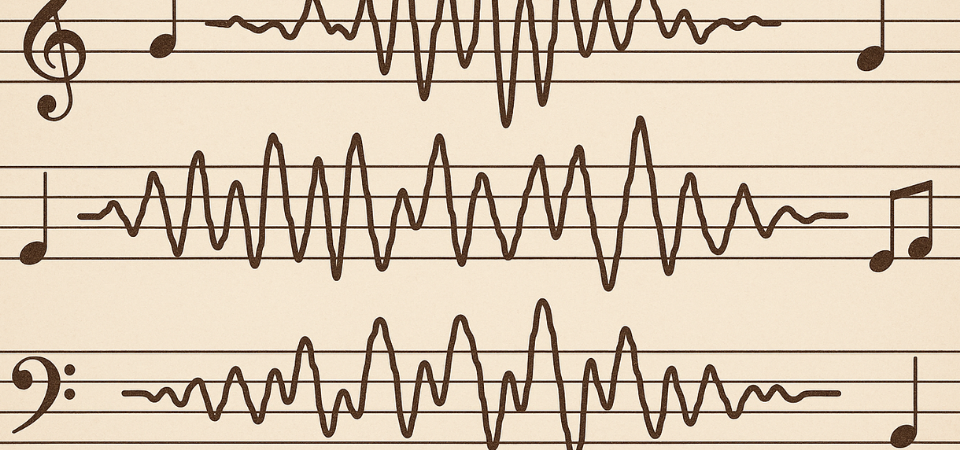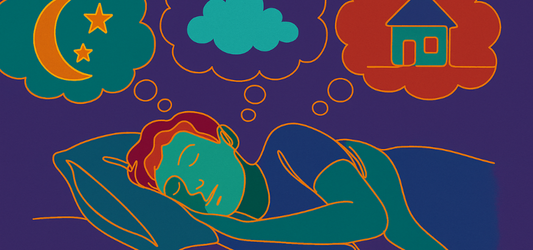Your brain’s own soundtrack could be the key to beating stress

How Your Brain Waves Become Personalized Stress Relief
A groundbreaking study from Wake Forest University School of Medicine has revealed that closed-loop acoustic neuromodulation—a technology that converts brain waves into personalized sound—can deliver meaningful stress reduction in remarkably short sessions. The research, published in Global Advances in Integrative Medicine and Health, tracked 144 healthcare workers experiencing moderate-to-high stress levels.
The intervention itself sounds almost futuristic: participants relaxed in zero-gravity chairs with their eyes closed while specialized technology translated their real-time brain waves into customized tones. These personalized sounds were then played back to participants, creating what researchers call a "closed loop" where the brain essentially listens to and responds to its own electrical activity.
"The echoed tones interact with the brain to balance and quiet itself and release stress patterns," explains the study's approach. Think of it as giving your nervous system a mirror—when the brain hears its own patterns reflected back as sound, it naturally begins to self-regulate and find equilibrium.
The Science Behind Sound-Based Brain Training
Traditional neuromodulation approaches often require lengthy, complex protocols that make real-world application challenging. This study streamlined the process dramatically: participants received just four sessions over two weeks, with each session lasting slightly over 30 minutes.
The technology works by detecting electrical brain activity through sensors, then immediately converting those signals into acoustic frequencies. Unlike passive meditation apps or generic relaxation sounds, this approach creates a dynamic feedback loop where each person's unique brain patterns generate their own therapeutic soundtrack.
What makes this particularly significant is the study's inclusive design. Researchers didn't exclude participants based on medication use or other substances, making the findings more applicable to real-world populations who may be managing stress through various means.
Measurable Changes in Stress and Cognitive Function
After six to eight weeks, participants who received the acoustic neuromodulation showed substantial improvements across multiple wellness markers. The results weren't just subjective feelings—researchers documented meaningful reductions in stress, anxiety, and insomnia, along with significant decreases in fatigue and depression.
Perhaps most intriguingly for cognitive performance enthusiasts, participants also reported improved subjective cognition. This suggests the intervention didn't just help people feel calmer—it may have enhanced their mental clarity and processing abilities.
The control group, placed on a waitlist, didn't experience these improvements, strengthening the evidence that the brain wave technology itself drove the positive changes rather than placebo effects or the passage of time.
Why This Matters for Stress Management
Dr. Charles H. Tegeler, the study's principal investigator and professor of neurology at Wake Forest, emphasized the intervention's potential scalability: "These results suggest that closed-loop acoustic neuromodulation is a safe, scalable, and effective option to complement organizational strategies for supporting healthcare worker brain health and well-being."
This scalability factor addresses a critical gap in stress management. While individual therapy, meditation training, and pharmaceutical interventions all have their place, they often require significant time investments, ongoing costs, or potential side effects. A technology that delivers measurable results in under 40 minutes of total exposure could democratize access to effective stress relief.
The timing is particularly relevant as workplace stress reaches epidemic levels across industries, not just healthcare. The World Health Organization has recognized burnout as an occupational phenomenon, and employers are increasingly seeking evidence-based interventions that don't require extensive training or ongoing supervision.
Practical Applications and Future Directions
The study's streamlined approach makes it distinctly different from previous neuromodulation research. By reducing session requirements and duration while maintaining effectiveness, the researchers have created a more practical model for real-world implementation.
For individuals managing chronic stress, this research suggests that targeted, technology-assisted interventions might complement traditional approaches like exercise, nutrition optimization, and sleep hygiene. The personalized nature of the sound therapy means each session is tailored to an individual's current brain state rather than following a one-size-fits-all protocol.
However, questions remain about long-term effects, optimal session spacing, and how the intervention might work for different populations beyond healthcare workers. The technology also requires specialized equipment, which may limit immediate accessibility compared to app-based or self-guided stress management tools.
The Broader Implications for Brain Health
This research fits into a growing understanding that the brain responds dynamically to its environment—including acoustic environments. Just as certain frequencies can disrupt sleep or concentration, carefully calibrated sounds based on individual brain patterns appear capable of promoting relaxation and cognitive clarity.
The findings also highlight the potential for personalized approaches to mental wellness. Rather than assuming all brains respond identically to stress interventions, this technology acknowledges that each person's neural patterns are unique and may require customized therapeutic approaches.
As Dr. Tegeler noted, the research team is "eager to identify ways to broadly offer the intervention to teammates across our health system and beyond," suggesting that practical implementation may be closer than typical research timelines would suggest.
The convergence of neuroscience, audio technology, and workplace wellness represents a promising frontier for addressing stress-related health challenges. While 36 minutes of personalized brain wave therapy won't solve systemic workplace issues, it offers a scientifically-backed tool that could complement broader efforts to support mental health and cognitive resilience in high-stress environments.



